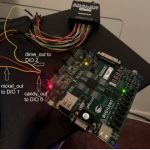Abstract
Research shows that active learning improves student performance and narrows the achievement gaps for marginalized groups. One of the active learning strategies is the use of flipped learning. However, flipped classrooms pose challenges due to reluctant student preparation in the pre-class learning requirements and general resistance from students to the modality. To address these challenges for a flipped engineering course in Numerical Methods, adaptive learning lessons that present content, assessment, and feedback based on student engagement and performance were created for pre-class learning using a commercial platform. The paper details how the lessons were developed, implemented in pre-class learning, and revised, creating a framework for other engineering educators who may want to duplicate them. An initial study of student behavior during the lessons showed that a low-performing student made many more attempts at the assessments while spending less time on the accompanying learning materials.
